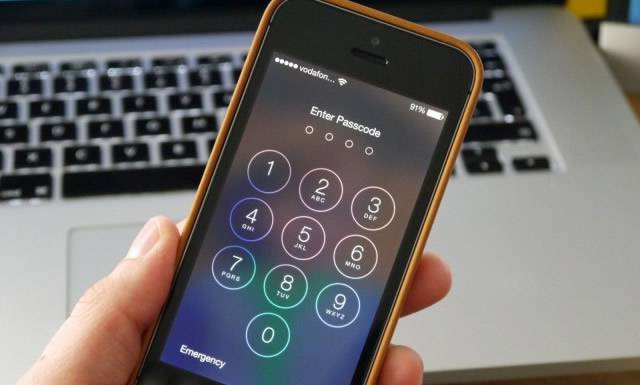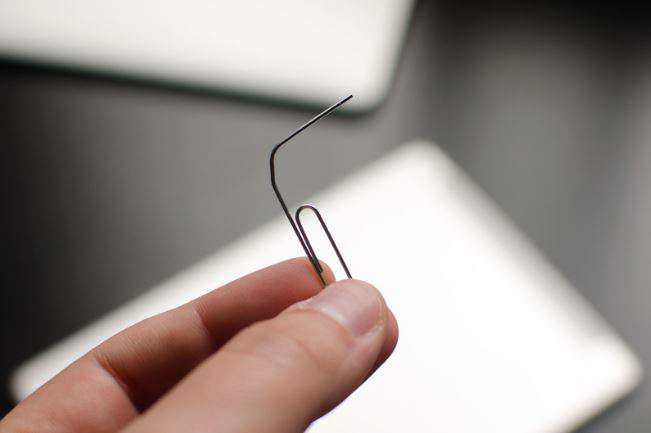To turn off proxy settings on your iPhone, you can follow the steps below:
1. Open Settings and tap Wi-Fi.
2. Tap the blue (i) icon next to your current network.
3. Scroll down and select ‘Configure Proxy’ under HTTP Proxy setting.
4. Select Off from the dropdown menu in order to turn off all proxies running on your device.
Where is proxy settings in iPhone?
How do I turn off proxy on my phone?
There are a few steps you can take to turn off the proxy settings on your phone. Depending on what type of device and operating system you have, the process may be slightly different. Here is an overview of how to turn off a proxy server on both Android and iOS devices:
Android Devices:
1. Open Settings from the Home screen or App Drawer
2. Tap Wi-Fi (or Wireless & Networks).
3. If necessary, tap the name of your current Wi-Fi network to select it in order to access its settings options.
4. Scroll down, if necessary, until you reach Proxy then tap it open (it should be located under Advanced section)
5. Select None from the dropdown menu next to Proxy Setting option
6. Save any changes by tapping Done or Back in top left corner
iOS Devices: 1. Go into Settings > Wi-Fi
2. Tap on your connected wireless network’s name/SSID 3. Click Configure Proxy > Off 4 .Save any changes by tapping Done in top right corner
How do I disable proxy?
Disabling a proxy server is relatively straightforward, but the exact steps may vary depending on the type of proxy you are using. Generally speaking, you should be able to disable a proxy by going into your browser settings and changing them accordingly. If this doesn’t work or if you’re not sure how to access your browser settings, follow these steps:
1. Open up Control Panel in Windows
2. Go to Network and Internet
3. Select “Internet Options”
4. Click the Connections tab at the top of the window
5. Select LAN Settings at the bottom of that window
6. Uncheck any boxes labeled “Use a Proxy Server for Your LAN” or similar wording
7. Click OK twice to save changes and exit out of all windows
Once these steps have been followed correctly, your computer should no longer be using a proxy server and will connect directly through your network instead
Should iPhone configure proxy be off?
Yes, it is generally recommended to turn off proxy settings on an iPhone. This will help ensure that your device is able to connect directly to the internet without going through any third-party servers. To disable proxy settings on an iPhone, follow these steps:
1. Go to Settings > Wi-Fi
2. Tap the “i” icon next to your current Wi-Fi network
3. Scroll down and tap “Configure Proxy”
4. Select “Off” from the list of options
5. Save changes and exit out of Settings
By following these steps, you should be able to successfully turn off proxy settings on your iPhone and enjoy a secure connection with direct access to the internet!
Does iPhone have proxy?
Yes, iPhones can be configured to use a proxy. To set up a proxy server on your iPhone, go to the Settings app and tap Wi-Fi. Tap the information icon next to the network you’re connected to, then scroll down and select “Configure Proxy.” Select either Automatic or Manual depending on how your network is set up. If you have an automatic setup, enter in the URL of your proxy server. For manual setups, enter in both the address of your proxy server as well as its port number.
How do I find my proxy settings on my phone?
To find your proxy settings on your phone, you’ll need to access the network settings. Depending on the make and model of your device, this may be found in different locations.
For example, if you’re using an Android device, open the Settings app and go to Network & Internet > Wi-Fi or Advanced > Proxy. You can also search for “Proxy” in the search bar at the top of Settings. Once there, you will be able to view any current proxies configured as well as set up a new one.
If you are using an iPhone or iPad, open Settings then tap Wi-Fi and select your network connection from the list of networks available (if applicable). Tap Configure Proxy near the bottom of that screen and then choose Manual to configure a proxy server manually if necessary.
Once you have accessed these settings screens, it should be easier for you to locate where exactly these options are located so that future changes can be made quickly and easily when needed!
How do I disable proxy or Unblocker?
Disabling a proxy or unblocker is fairly straightforward, but the exact steps may vary depending on which type of proxy or unblocker you are using. Generally speaking, however, here are the basic steps you can take to disable a proxy or unblocker:
1. Open your browser and go to the settings menu – usually accessed via the cog icon in the top right corner.
2. Look for any options that mention proxies, VPNs and unblocking services and turn them off if they are enabled.
3. If there is an option to delete existing connections or profiles related to these services do so as well.
4. Restart your browser after making changes and ensure that all previously mentioned features have been disabled properly before continuing browsing normally again.
Is it OK to disable proxy?
It is generally not recommended to disable your proxy, as it can leave your device and network vulnerable to potential security risks. There are certain circumstances when disabling a proxy may be necessary or beneficial; however, it is important to understand the implications of doing so prior to taking any action. If you decide that disabling your proxy is the best course of action for your situation, there are some steps you can take in order to ensure that this process does not expose your data and devices at risk.
{“@context”:”https://schema.org”,”@type”:”FAQPage”,”mainEntity”:[{“@type”:”Question”,”name”:”How do I turn off proxy on my phone?”,”acceptedAnswer”:{“@type”:”Answer”,”text”:”nnThere are a few steps you can take to turn off the proxy settings on your phone. Depending on what type of device and operating system you have, the process may be slightly different. Here is an overview of how to turn off a proxy server on both Android and iOS devices: nnAndroid Devices: n1. Open Settings from the Home screen or App Drawer n2. Tap Wi-Fi (or Wireless & Networks). n3. If necessary, tap the name of your current Wi-Fi network to select it in order to access its settings options. n4. Scroll down, if necessary, until you reach Proxy then tap it open (it should be located under Advanced section) n5. Select None from the dropdown menu next to Proxy Setting option n6. Save any changes by tapping Done or Back in top left corner nniOS Devices: tttt tt 1. Go into Settings > Wi-Fi n2. Tap on your connected wireless networku2019s name/SSID 3. Click Configure Proxy > Off 4 .Save any changes by tapping Done in top right corner”}},{“@type”:”Question”,”name”:”How do I disable proxy?”,”acceptedAnswer”:{“@type”:”Answer”,”text”:”nnDisabling a proxy server is relatively straightforward, but the exact steps may vary depending on the type of proxy you are using. Generally speaking, you should be able to disable a proxy by going into your browser settings and changing them accordingly. If this doesn’t work or if you’re not sure how to access your browser settings, follow these steps: n1. Open up Control Panel in Windows n2. Go to Network and Internet n3. Select “Internet Options” n4. Click the Connections tab at the top of the window n5. Select LAN Settings at the bottom of that window n6. Uncheck any boxes labeled “Use a Proxy Server for Your LAN” or similar wording n7. Click OK twice to save changes and exit out of all windows nOnce these steps have been followed correctly, your computer should no longer be using a proxy server and will connect directly through your network instead”}},{“@type”:”Question”,”name”:”Should iPhone configure proxy be off?”,”acceptedAnswer”:{“@type”:”Answer”,”text”:”nnYes, it is generally recommended to turn off proxy settings on an iPhone. This will help ensure that your device is able to connect directly to the internet without going through any third-party servers. To disable proxy settings on an iPhone, follow these steps: n1. Go to Settings > Wi-Fi n2. Tap the u201ciu201d icon next to your current Wi-Fi network n3. Scroll down and tap u201cConfigure Proxyu201d n4. Select u201cOffu201d from the list of options n5. Save changes and exit out of Settings nBy following these steps, you should be able to successfully turn off proxy settings on your iPhone and enjoy a secure connection with direct access to the internet!”}},{“@type”:”Question”,”name”:”Does iPhone have proxy?”,”acceptedAnswer”:{“@type”:”Answer”,”text”:”nnYes, iPhones can be configured to use a proxy. To set up a proxy server on your iPhone, go to the Settings app and tap Wi-Fi. Tap the information icon next to the network you’re connected to, then scroll down and select “Configure Proxy.” Select either Automatic or Manual depending on how your network is set up. If you have an automatic setup, enter in the URL of your proxy server. For manual setups, enter in both the address of your proxy server as well as its port number.”}},{“@type”:”Question”,”name”:”How do I find my proxy settings on my phone?”,”acceptedAnswer”:{“@type”:”Answer”,”text”:”nnTo find your proxy settings on your phone, you’ll need to access the network settings. Depending on the make and model of your device, this may be found in different locations. nFor example, if you’re using an Android device, open the Settings app and go to Network & Internet > Wi-Fi or Advanced > Proxy. You can also search for “Proxy” in the search bar at the top of Settings. Once there, you will be able to view any current proxies configured as well as set up a new one. nIf you are using an iPhone or iPad, open Settings then tap Wi-Fi and select your network connection from the list of networks available (if applicable). Tap Configure Proxy near the bottom of that screen and then choose Manual to configure a proxy server manually if necessary. nOnce you have accessed these settings screens, it should be easier for you to locate where exactly these options are located so that future changes can be made quickly and easily when needed!”}},{“@type”:”Question”,”name”:”How do I disable proxy or Unblocker?”,”acceptedAnswer”:{“@type”:”Answer”,”text”:”nnDisabling a proxy or unblocker is fairly straightforward, but the exact steps may vary depending on which type of proxy or unblocker you are using. Generally speaking, however, here are the basic steps you can take to disable a proxy or unblocker: nn1. Open your browser and go to the settings menu u2013 usually accessed via the cog icon in the top right corner. n2. Look for any options that mention proxies, VPNs and unblocking services and turn them off if they are enabled. n3. If there is an option to delete existing connections or profiles related to these services do so as well. n4. Restart your browser after making changes and ensure that all previously mentioned features have been disabled properly before continuing browsing normally again.”}},{“@type”:”Question”,”name”:”Is it OK to disable proxy?”,”acceptedAnswer”:{“@type”:”Answer”,”text”:”nnIt is generally not recommended to disable your proxy, as it can leave your device and network vulnerable to potential security risks. There are certain circumstances when disabling a proxy may be necessary or beneficial; however, it is important to understand the implications of doing so prior to taking any action. If you decide that disabling your proxy is the best course of action for your situation, there are some steps you can take in order to ensure that this process does not expose your data and devices at risk.”}}]}




